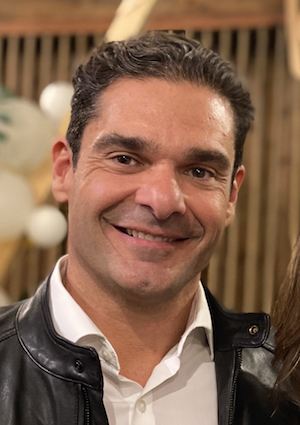
Nombre
Corbera Sánchez, Juan Alberto
Correo Electrónico
juan.corbera@ulpgc.es
Teléfono
928454305
Afiliaciones
Categoría
Titular de Universidad
Rama de Conocimiento
Ciencias De la Salud
Área de Conocimiento
Medicina y Cirugía Animal
Campo CNEAI
Ciencias Biomédicas
Biografía
I started my professional activity in 1995 as veterinary clinician, which is closely connected to my teaching and research work. I began my doctoral studies in nutritional and metabolic diseases in ruminants, culminating in my doctoral thesis "Contributions to the Study of White Muscle Disease in dromedaries (Camelus dromedarius)" in 2000. This line of research led to several oral communications in 1998, 1999, 2000, 2001, and several publications in 1998, 1999, 2000, and 2001. I completed my postdoctoral clinical training at the University of Davis, California (USA). Finally, we wrote a chapter in a book in 2004. Through these manuscripts, we have contributed to the understanding of this disease. The addition of Selenium to dromedaries in the form of mineral blocks has led to the disappearance of the disease in the Canary Islands. My first contact with animal trypanosomosis was in 1997 when our research team led by Dr. Carlos Gutiérrez diagnosed the first case of T. evansi in the Canary Islands (1997). In the same year, we informed about the clinical presentation of the disease (1997) and presented it at other conferences (1997), publishing the first articles in 1998. Then, epidemiological and clinical studies were initiated, and results were presented at conferences in 1999, 2000 and 2001. Our first publications with impact factor on this disease focused on seroprevalence and diagnostic techniques in 2000 (JCR Q1) and 2000 (JCR Q1). Thanks to the funding of several research projects, we were able to start animal experimentation studies and continuously communicate the results since 2003 to 2009. These results were also published in high impact journals in 2004, 2005 and 2006. These manuscripts were the results of research projects funded by the Canary Islands Autonomous Community in 2005 and also by the Spanish Ministry (2005), with my participation as a member of the research team. Our attempts to eradicate the disease began in those years and allowed us to publish on the experimental use of cymelarsan in goats in 2008 and in 2011. This accumulated experience eventually allowed us to contribute to a book chapter in 2013. Over the following years, we have continued to work towards eradicating the disease and, as a result of international collaboration and in recognition of our research, we have partnered with CIRAD and FAO to develop the COMBAT project (funded by the EU in H2020), of which I am a Co-PI alongside Dr. Tejedor-Junco until 2025. With the inclusion of the study of disease vectors, we have obtained new research results, which were reported in 2022 and 2023 and we have already published two articles in 2023 and 2024. These results are part of the doctoral thesis of our current PhD student (Adrián Melian) scheduled for 2026. My first contact with Dirofilariosis began with an epidemiological study on the prevalence of the disease in 1998. I later joined Dr. Montoya-Alonso's team (a member of the project's research team) in several communications and publications of the results of this line in 2007. These results allowed us to obtain funding from the Canary Island autonomous community in 2009, which permitted us to continue presenting results at conferences in 2009 and 2010. We continued to publish the results of this line of research in high-impact journals in 2011. I have been developing Veterinary Clinical Activity in private veterinary clinics until 2000, later my clinical activity has been linked to the ULPGC Veterinary Teaching Hospital. Since 2010, I’ve led the Veterinary Neurology activity as Head of the Service where I have completed all my research clinical activity with relevant results related to various clinical studies. I would like to emphasise that many of the aforementioned research activity includes diagnostic imaging studies as an essential diagnostic tool in my clinical activity. As Coordinator (IP) of the ULPGC Research Group “TRAMA”, we support the application for projects and the management of the research of our researchers of the group, with the aim of giving continuity to our lines of research, so we intend to give continuity to the objectives set in our research group. CV in figures (May 2024): 27 years at ULPGC, 26 Research projects (7 PI), 10 Research contracts, 71 Research Papers in JCR, 13 Research papers (non-JCR), 10 Research book chapters, 5 Teaching book chapters, 80 communications to Congresses, 13 invited conferences, 4 PhD tutorized, 20 Final Degree tutorized, 14 external courses as lecturer, 113 professional courses organized, 8 visitations as expert of ESEVT by EAEVE, 4 six-year period recognized (sexenios - CNEAI) Academic and professional responsibilities: Secretary of the Official College of Veterinarians of Las Palmas 2001 – 2013. Vice-Dean 2004 – 2015. Dean 2015 – 2020. (Veterinary Faculty - ULPGC). Director of Human Resources for Research 2021 – present (Vice-Rectorate of Research and Technology Transfer - ULPGC).
ResearchGate
Google Scholar
ORCID
Scopus ID
ResearcherID
Dialnet ID